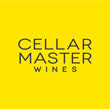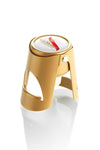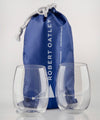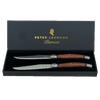Prosecco, the effervescent darling of Italy, has captured hearts worldwide with its light, refreshing sparkle. Originating from the Veneto and Friuli Venezia Giulia regions, this sparkling wine is made primarily from the Glera grape, known for its crisp acidity and delicate fruit flavors. Unlike Champagne, Prosecco is typically produced using the Charmat method, where secondary fermentation occurs in large stainless steel tanks, preserving its vibrant, youthful character.
What makes Prosecco so beloved? Its versatility. With notes of green apple, pear, and citrus, it pairs beautifully with a range of dishes, from fresh seafood to creamy risottos. Its lower alcohol content—often around 11%—makes it an ideal aperitivo for casual gatherings or a sunny afternoon spritz. Prosecco comes in three styles: Brut (dry), Extra Dry (slightly sweet), and Dry (sweeter), catering to diverse palates.

The wine’s popularity has soared, with global sales surpassing Champagne in recent years. Its affordability doesn’t compromise quality; DOC and DOCG designations ensure authenticity and excellence, with Conegliano Valdobbiadene Prosecco Superiore DOCG representing the pinnacle of craftsmanship from hillside vineyards.
Prosecco’s charm extends beyond the glass. It embodies la dolce vita—an invitation to celebrate life’s simple pleasures. Whether sipped at a wedding, mixed into a Bellini, or enjoyed solo, it brings a touch of Italian elegance to any moment. As sustainability grows in focus, many Prosecco producers are adopting eco-friendly practices, ensuring this bubbly delight remains a guilt-free indulgence.

What's the difference between Prosecco and Champagne?
Prosecco and Champagne are both sparkling wines, but they differ significantly in origin, production, and flavor. Prosecco hails from Italy’s Veneto region, primarily made from Glera grapes, while Champagne comes exclusively from France’s Champagne region, using Chardonnay, Pinot Noir, and Pinot Meunier grapes.
The production methods also set them apart. Champagne undergoes the traditional method (méthode champenoise), where secondary fermentation occurs in the bottle, creating complex flavors and fine bubbles. This labor-intensive process often makes Champagne pricier. Prosecco, however, uses the Charmat method, with secondary fermentation in large tanks, resulting in a lighter, fruitier wine with larger bubbles and a more approachable price point.

Flavor-wise, Prosecco is typically fresh, with notes of apple, pear, and citrus, leaning toward a sweeter profile. Champagne offers richer, toasty, and nutty flavors, with a drier finish and greater complexity due to aging.
Next time you pop a cork, raise a glass to Prosecco’s joyful spirit. It’s more than a drink; it’s a lifestyle, sparkling with possibility.
Now go visit our Prosecco collection!







